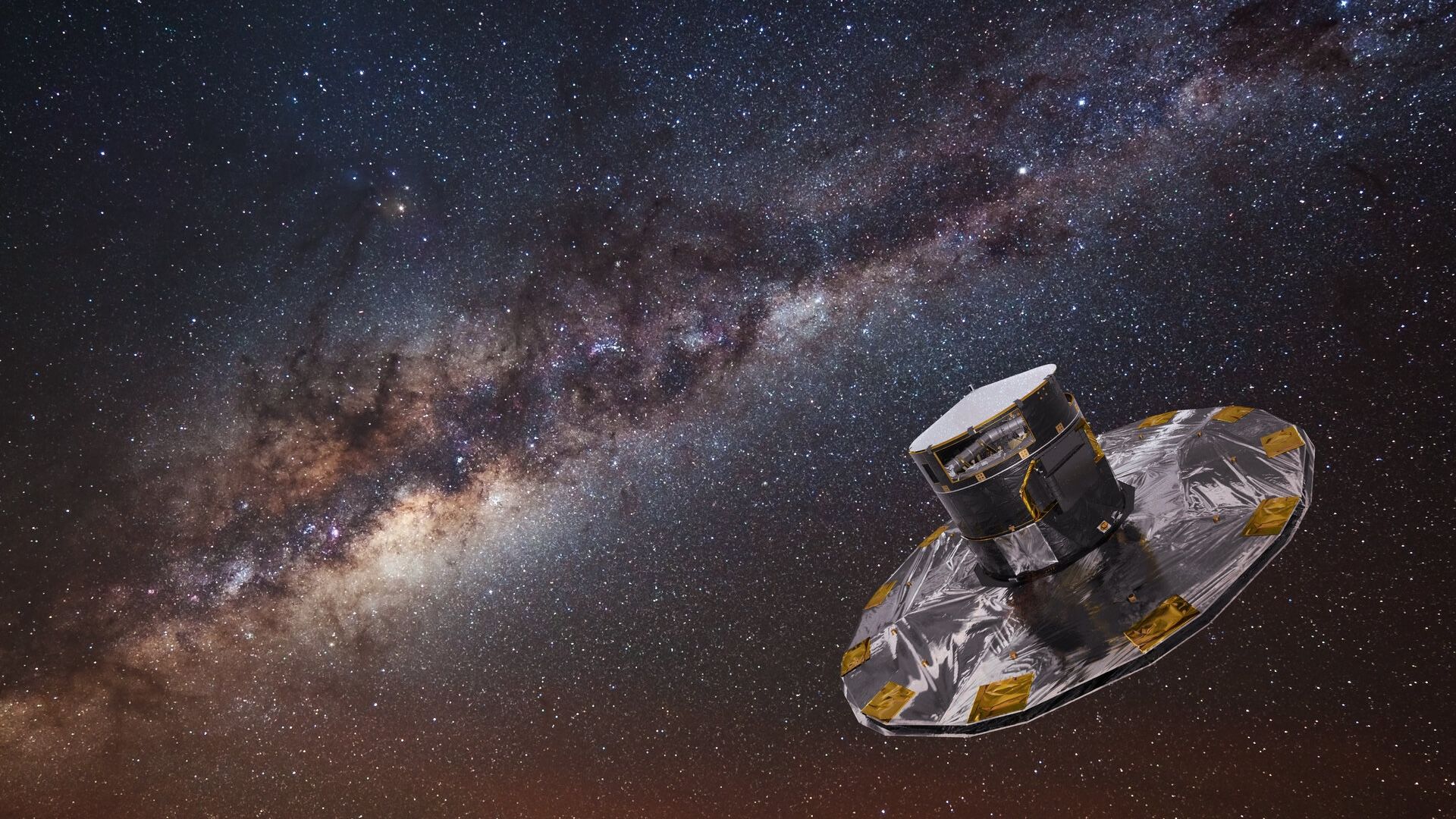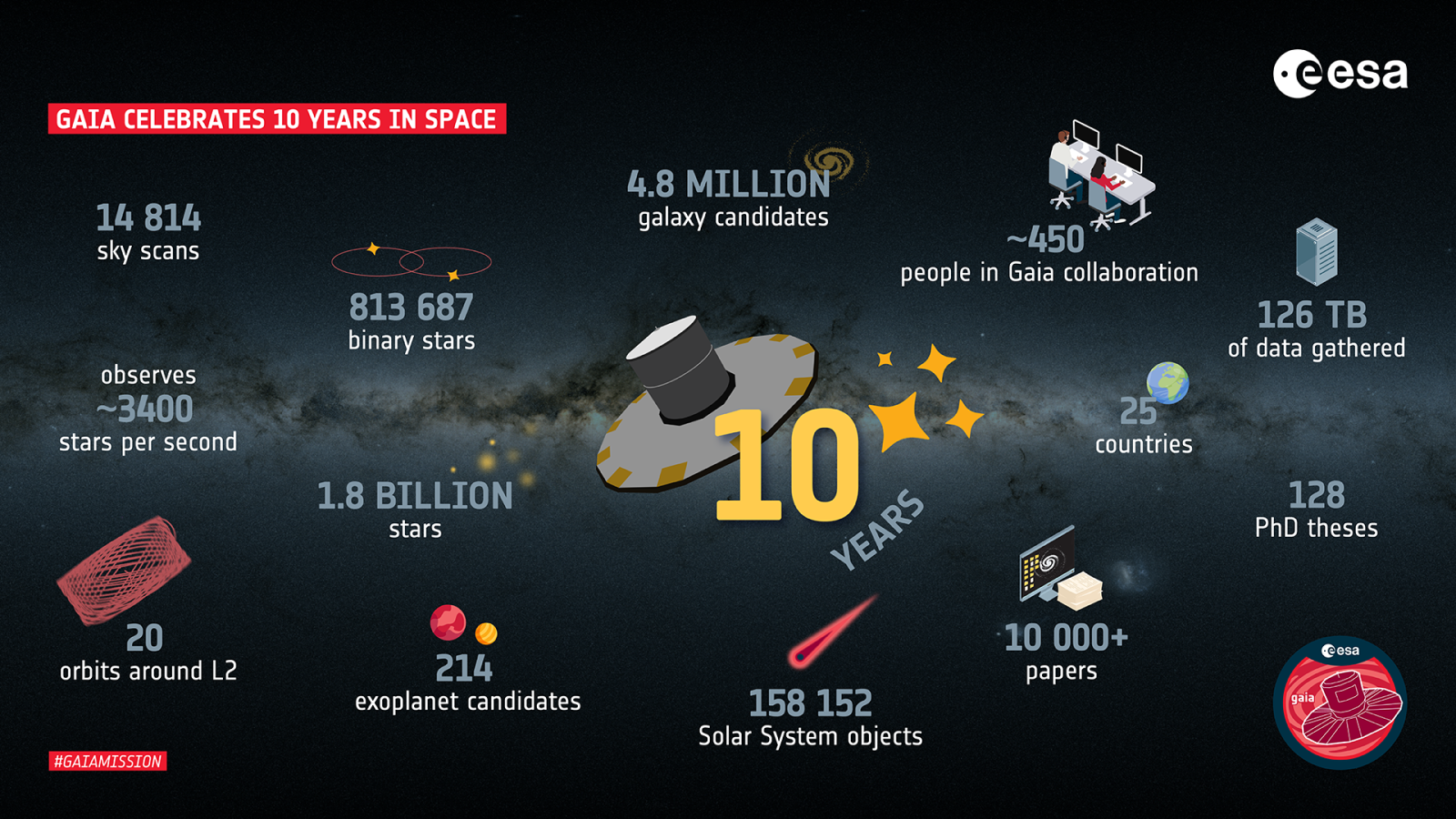Follow us on Google News (click on ☆)

Illustration of the European Space Agency's Gaia space observatory mapping the Milky Way.
Credit: ESA/ATG medialab; background: ESO/S. Brunier
Located at the Lagrange Point L2, Gaia's mission is to create a 3D map of the Milky Way's stars. Last April, a sand grain-sized micrometeoroid damaged the protective shield, disrupting the sensors. In May, a new electronic failure resulted in thousands of false star detections.
The May failure might be linked to a solar particle eruption that also triggered auroras around the globe. Despite the hardware impact, the team managed to fix the software by adjusting the star detection threshold, keeping Gaia in operation.
Launched in 2013, Gaia was originally intended to remain in orbit for six years. It has already far exceeded that duration, yielding major discoveries such as identifying the oldest stars in the Milky Way and observing stellar systems and hidden star companions.
With the mission now extended to 2025, Gaia continues to provide crucial data for understanding our galaxy and beyond. Stellar science owes much to this pioneering mission.

At the end of 2023, Gaia celebrated its 10th anniversary